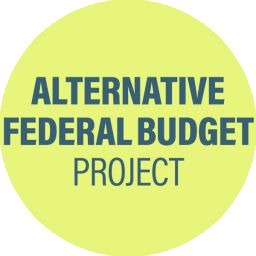Introduction
Investing in infrastructure is a key tool to decarbonizing the transport sector, increasing resilience to the impacts of climate change, while delivering a more inclusive economy and fostering greater social equity.
Canada’s infrastructure funding programs are now in a state of renewal. This renewal presents a historic opportunity to tackle car dependency through fostering better urban planning and investing in making alternative, sustainable modes of transportation—like transit, walking and cycling—convenient and attractive. This renewal is an opportunity for the federal government to create a real partnership with municipalities to unlock more housing supply and curb urban sprawl.
As owners of 60 per cent of Canada’s infrastructure, and as crucial decision makers on land use and mobility policy, municipalities have a crucial role to play in the fight against climate change and the rising cost of housing.1
For decades, successive federal and provincial governments have ‘downloaded’ their responsibilities to tackle these crucial issues onto municipalities without giving local governments the fiscal resources to handle them. The result has been transit systems heavily reliant on fare revenues and uniquely vulnerable to economic shocks like the pandemic. It has also meant a dwindling social housing stock, growing homelessness, decaying services and vulnerability to climate-related natural disasters.
It is time for this to change. Tackling these problems will require a partnership between all orders of government that connects federal dollars with results on the ground in communities across the country.
Not all infrastructure funding flows through other orders of government. Canada’s federal government can no longer abdicate its own unique responsibility for providing world-class, modern, frequent and high-speed inter-city passenger rail service. High quality passenger rail infrastructure is already taken as a given in many of our peer countries, and Canadians deserve no less.
Overview
Climate change adaptation urgently requires multi-level government support and collaboration in order to address this important issue. In many respects, cities are on the front lines of the climate emergency, and the need for adaptation measures within cities will only grow in the future. To date, Canada has announced $1.6 billion to implement the National Adaptation Strategy (NAS) and while this was certainly a positive step, the federal government must provide more support.
The federal government must negotiate next-generation, long-term infrastructure funding agreements with provinces and municipalities following the sunset of the Investing in Canada Infrastructure Program (ICIP). In this program, the federal government set itself a goal of increasing the mode share of public and active transportation by 25 per cent, contributing to a targeted overall reduction of carbon emissions by 10 megatonnes. The mode share for sustainable transportation in Canada is now far lower than when this program began in 2018. The federal government has not publicly reported whether its national GHG reduction target has been met, or included any targets related to achieving climate outcomes from infrastructure investments in the 2030 Emissions Reduction Plan.
This program has been plagued by an inability to get dollars out the door, with long delays between announced funding and results in communities.2 It has also not significantly improved public transit service levels because transit systems are not allowed to utilise public transit funding to run additional service, but only procure and build capital assets. This creates a bias towards rail projects in major cities while leaving improvements in bus service at the curb—which has consequences for both regional and social equity.3 The result of funding capital assets without a commensurate increase in operating funding has meant that while the capacity to run additional transit service has increased, actual service output has not.4 This has led to the Toronto Transit Commission (TTC) having 551 buses, 81 streetcars and 40 subway trains that could be in service, but are instead sitting idle.5
The federal government’s ever-present neglect of public passenger rail in Canada has led it to propose to privatize the most transformative expansion project in decades—the Quebec City-Windsor High Frequency Rail project. If Canada wants to make progress on reducing emissions, we must make travel around our communities and our country without a car or a plane a viable option. Further privatization will only degrade service quality and affordability and take us further from that goal.
Infrastructure privatization is at the heart of the failed Canada Infrastructure Bank (CIB). The CIB currently leverages a small amount of public seed money to attract investment in infrastructure from the private sector and other levels of government. This model has proven unsuccessful: the CIB has consistently failed to attract the enormous private capital it promised.
It is also unnecessarily expensive. Private investors demand returns between seven and eight per cent, while publicly funded infrastructure only needs to return interest costs. International evidence indicates that the public-private partnership (P3) model is one of the key factors at the root of cost inflation for infrastructure projects, in particular in public transit.6
AFB 2024 lays out a clear vision for a mission-based approach to transportation infrastructure funding, aimed at achieving:
- A doubling of urban public transit ridership by 2035.
- A tripling of the share of all trips done by active transportation (walking, cycling) by 2035.
- A 2035 ban on all domestic flights between urban centres with a high-speed rail connection, and tasking VIA Rail with developing plans for connecting Toronto-Ottawa-Montreal-Quebec City, Edmonton- Calgary and opening exploratory discussions with Amtrak and the US Government to connect Vancouver and Seattle with high-speed rail.
Actions
AFB 2024 highlights how creating stable, reliable sources of infrastructure funding with new federal standards can simultaneously drive multiple outcomes ranging from sustainability, inclusivity, climate resiliency, and affordability. To increase the transparency of infrastructure funding and to ensure it flows better to meet community needs, the AFB plans to include municipalities as direct governmental partners in tri-lateral infrastructure funding agreements with provinces.
The AFB will dedicate the equivalent of one per cent of existing GST revenue towards permanently increased infrastructure investment (worth $11 billion annually). Legislated programs—like the Canada Community Building Fund and VIA Rail’s new mandate—can deliver their best results when recipients can rely on predictable and dependable revenues to build out long-term expansion plans. Legislated program investments will be backed up by a dedicated tax revenue source to maximize this benefit and reduce uncertainty for project proponents.
This dedicated revenue source will support investments including:
- Permanently doubling the Canada Community Building Fund (formerly known as the Gas Tax Fund), which goes directly to support municipal infrastructure priorities. Cost: $2.4 billion (annually).
- Establishing a core public transit funding stream that makes the federal government’s emerging role in funding public transit operations permanent. This funding is flexible for both capital and operations and delivered alongside the Community Building Fund directly to local governments with transit systems by amending existing administrative agreements with provinces. All bus procurements funded under this program are required to be zero- emission. Cost: $2 billion (annually).
- Renewing 10-year program funding for the Investing in Canada Infrastructure Plan program streams: Green Infrastructure, Community Culture and Recreation Infrastructure, and Rural and Northern Infrastructure. Cost: $1.5 billion (annually).
- Increase funding for the Disaster Mitigation and Adaptation Fund (DMAF) to increase the resilience of communities that are impacted by natural disasters triggered by climate change and implement the National Adaptation Strategy. Cost: $1 billion (annually).
- A dedicated revenue stream and mandate for VIA Rail. VIA Rail’s neglect is at the heart of privatization proposals for expansion projects. The alternative is to bolster our national passenger rail service with a legislated mandate of its own, give it borrowing authority, and legislate a permanent revenue stream for capital expansion and operating subsidies. Cost: $2 billion (annually).
- Increase the funding profile of the Active Transportation Fund and expand project funding eligibility to include the deployment of municipal bikeshare and electric bikeshare systems that are publicly owned by and integrated into transit networks. Cost: $500 million (annually).
- Enhance and expand the Rural Transit Solutions program by adding an inter-city transit funding stream and expanding eligible costs to include operating funding. This locally driven initiative would empower municipal and Indigenous governments to partner with each other or higher-order public transit agencies, such as VIA Rail, B.C. Transit, Ontario Northland, EXO and others, or create their own public transit service providers to provide public, intercity bus services. Cost: $250 million (annually).
Transformative investments in public transportation
The AFB will accelerate the launch of the Permanent Public Transit funding program from 2026 to 2024. This program will contain three major funding streams: one focused on major capital projects—like subways, light rail, and bus rapid transit. A second focused on a core, reliable, permanent funding stream for transit operating costs, state-of- good-repair, technology enhancements and bus fleet renewal, including electric bus procurement. A third focused on post-pandemic recovery and incenting cost-efficient long-term growth through a per-ride operating subsidy of $1 for each additional ride above 2019 ridership levels.
- Public Transit: Major Projects Stream ($4.5 billion total per year, including existing $3b/year existing permanent transit fund allocations). Existing project requirements—like Indigenous consultations, accessibility standards, and community benefit agreements—will be renewed and enhanced in this next generation program. Additionally, all major capital projects funded by the major projects stream will be required to include ‘supportive policies agreements’ that align with federal land-use guidelines.7 Business cases for major capital projects would have to include plans to:
- Integrate the project with enhanced active transportation and bus network connections to enhance first and last-mile connections to major transit station areas and facilitate ridership growth through the ‘network effect’
- Share up to 50 per cent of total project costs between the province and municipality or regional transit authority, with no P3 involvement
- Leverage the transit investment to create more affordable housing units through:
- The provision of non-market housing near transit;
- The preservation of existing affordable housing in the context of land-value uplift, with rent stabilization and anti-displacement strategies;
- Increasing housing density near transit improvements through zoning reform within the framework of creating, walkable, transit-oriented, complete communities, including eliminating minimum parking requirements.
- Public Transit: Per-Rider Performance Subsidy ($1.15 billion over four years). This operating subsidy to transit systems will be tied to the core funding stream as a performance-based incentive to stimulate ridership-enhancing investments in service and operating speeds to foster post-pandemic ridership recovery and incenting cost-efficient long-term growth. Through a per-ride subsidy of $1 for each additional ride above 2019 ridership levels, (pegged to inflation) this will provide a strong incentive for transit systems to adapt to post-pandemic travel patterns in a manner that attracts new riders; turbocharge service expansion to help Canada meet its climate targets; and ensure operating subsidies have an efficient pass-through to service increases rather than increased costs.
This AFB will transform the Canada Infrastructure Bank (CIB) into the new Public Climate Bank to focus on publicly owned and operated infrastructure. It will redirect the remaining funds of the CIB’s original $35 billion allocation to projects that advance climate resilience and reduce carbon emissions. The new Public Climate Bank will provide low-cost loans to municipalities, Indigenous governments, public utilities and other public bodies to scale up important, transformative infrastructure projects that are in the public interest.
This would include investments in low- carbon infrastructure in fossil-fuel-dependent communities to help those regions rapidly transition away from their dependence on coal, oil, and natural gas production (see Fair and Equitable Transition chapter). The Canada Growth Fund will also be folded into the Public Climate Bank and eliminate financing to false climate solutions, including carbon capture and storage (CCUS) and fossil hydrogen. Instead, it will focus on activities such as financing and loan guarantees for the buildout of zero-emission vehicle charging infrastructure (See Environment and Climate Change Chapter).
This AFB will establish a new National Community Development Agency to help provide expertise on urban issues, particularly to municipalities with few in-house resources. Coordinating with the Federation of Canadian Municipalities, other federal departments, provinces and cities this new centre of excellence will work with municipalities to help them develop strategies to advance community development, sustainable urban mobility and climate adaptation plans. Additionally their mandate will include:
- Delivering guidance on application processes for federal programs and funding and performing outreach activities to help small and rural communities have an even footing with major cities in competitive infrastructure grant programs.
- Developing standards for Community Benefit Agreements (CBA) to be negotiated as part of infrastructure project investments.
- Create federal guidance on transit-oriented development best practice, and land use guidelines for eligibility under the public transit major projects stream.
- Ensuring that federally owned assets, including land, buildings, and fleets, are leveraged to advance community development and climate adaptation goals. Cost: $15 million annually.






